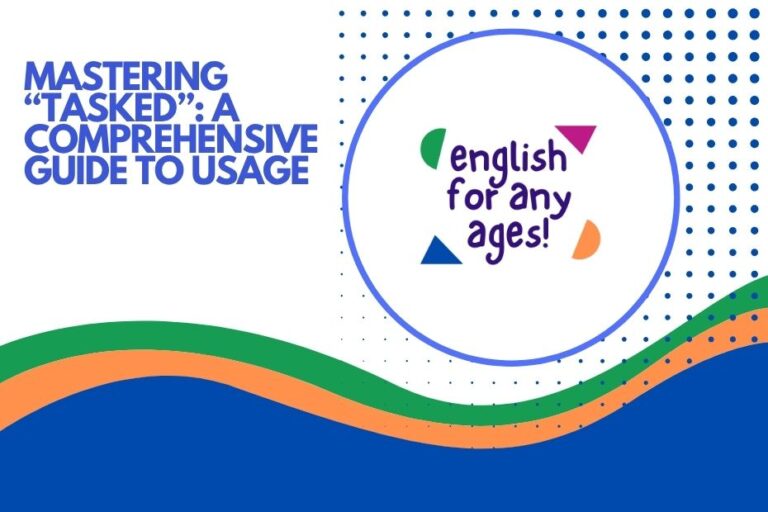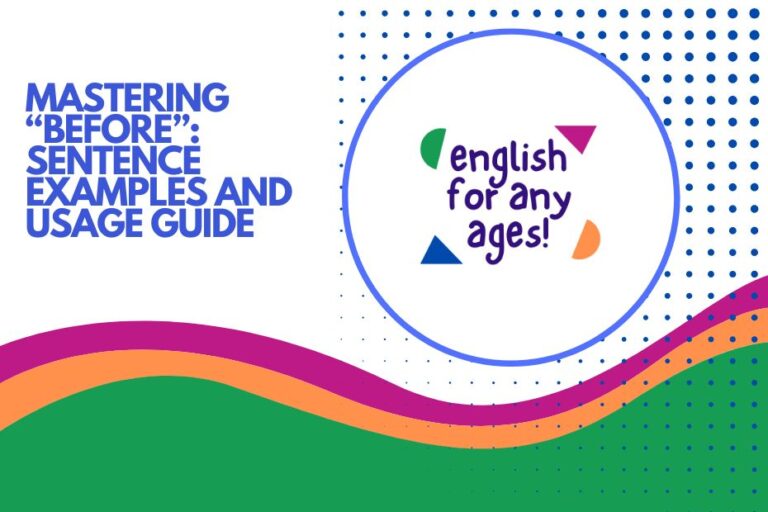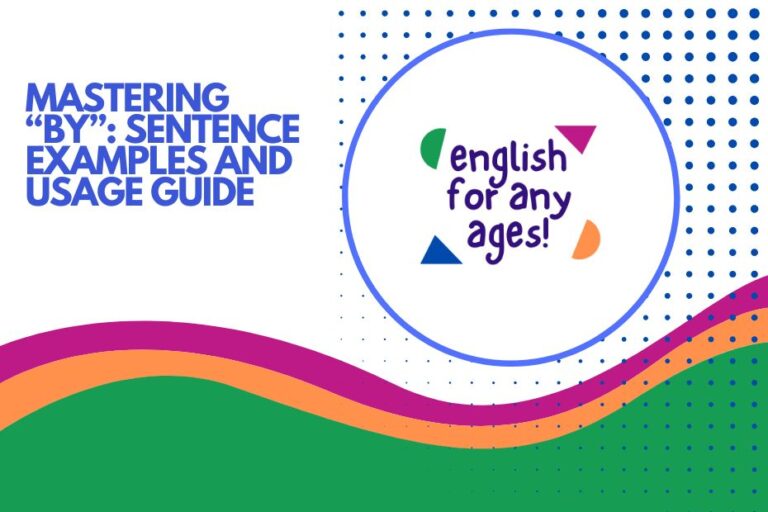Mastering “From”: Sentence Examples & Usage Guide
Understanding the preposition “from” is crucial for mastering English grammar. It indicates origin, source, separation, and more.
This article provides a comprehensive guide, exploring various uses of “from” with sentence examples, usage rules, and practice exercises. Whether you’re a beginner or an advanced learner, this guide will help you confidently use “from” in your writing and speech.
This comprehensive guide is designed for English language learners of all levels, from beginners seeking a foundational understanding to advanced speakers aiming to refine their precision and nuance. Native English speakers can also benefit from the structured approach and detailed explanations to solidify their intuitive grasp of the preposition “from.”
Table of Contents
- Definition of “From”
- Structural Breakdown
- Types of Usage
- Examples with “From”
- Usage Rules
- Common Mistakes
- Practice Exercises
- Advanced Topics
- FAQ
- Conclusion
Definition of “From”
The preposition “from” primarily indicates the source, origin, starting point, or cause of something. It signifies a movement, either physical or metaphorical, away from a particular place, person, time, or condition. “From” helps establish relationships between different elements in a sentence by showing where something originates or begins.
It is categorized as a preposition of place, time, or cause, depending on the context. Its function is to connect a noun or pronoun (the object of the preposition) to another part of the sentence, providing essential information about the relationship between them. The preposition “from” is versatile and frequently used in English.
Structural Breakdown
The basic structure involving “from” is: Subject + Verb + from + Object. The “object” is typically a noun or pronoun that specifies the source, origin, or starting point. Understanding this structure helps in constructing grammatically correct and meaningful sentences.
For example, in the sentence “She comes from Italy,” “Italy” is the object of the preposition “from,” indicating her place of origin. Similarly, in “I learned it from a book,” the book serves as the source of the information.
Here are some examples to illustrate structural variations:
- Simple: He received a letter from his friend.
- With modifiers: She got a beautiful postcard from her trip to Paris.
- Complex: The information was extracted from a highly confidential document.
Types of Usage
Origin or Source
“From” is commonly used to indicate the origin or source of something. This can refer to a physical place, a person, or even an abstract idea.
Examples include:
- He is from Canada. (Place of origin)
- I received a gift from my mother. (Source: person)
- The idea came from a dream. (Source: abstract)
Separation or Removal
Another key use of “from” is to denote separation or removal. This implies that something is being taken away or detached from something else.
Examples include:
- Take the cookies from the oven.
- He rescued the cat from the tree.
- I removed the stain from the shirt.
Starting Point in Time or Space
“From” can also specify a starting point in time or space, indicating where something begins.
Examples include:
- The store is open from 9 AM to 5 PM. (Time)
- The path leads from the house to the lake. (Space)
- From this point forward, we will focus on improvement. (Abstract starting point)
Cause or Reason
Using “from” to indicate cause or reason shows that something is a result or consequence of something else.
Examples include:
- He suffered from a headache.
- She was absent from school due to illness.
- The project failed from lack of funding.
Material or Composition
Sometimes, “from” is used to describe the material or ingredients something is made of.
Examples include:
- Wine is made from grapes.
- The statue was carved from marble.
- Paper is produced from wood pulp.
Perspective or Viewpoint
“From” can also indicate a perspective or viewpoint, showing a particular angle from which something is viewed or considered.
Examples include:
- From my perspective, it was a good decision.
- From an economic standpoint, the project is viable.
- From a historical perspective, this event is significant.
Distinguishing or Difference
In some cases, “from” highlights a distinction or difference between two things.
Examples include:
- He can’t tell the difference from butter and margarine.
- This car is different from the previous model.
- Distinguish right from wrong.
Examples with “From”
This section provides extensive examples of sentences using “from” in various contexts. These examples will help you understand the different ways “from” can be used and how it functions in different sentence structures.
The following table highlights examples where “from” indicates origin or source:
| Category | Example Sentences |
|---|---|
| Place of Origin |
|
The table below illustrates sentences where “from” indicates separation or removal:
| Category | Example Sentences |
|---|---|
| Separation/Removal |
|
The following table showcases the usage of “from” to indicate a starting point in time or space:
| Category | Example Sentences |
|---|---|
| Starting Point |
|
The table below provides sentences where “from” indicates cause or reason:
| Category | Example Sentences |
|---|---|
| Cause/Reason |
|
This table presents sentences where “from” describes material or composition:
| Category | Example Sentences |
|---|---|
| Material/Composition |
|
Usage Rules
Understanding the rules governing the use of “from” is essential for correct grammar. Here are some key rules to remember:
- Origin/Source: Use “from” to indicate where something comes from. For example, “The letter came from my sister.”
- Separation/Removal: Use “from” to show that something is being taken away or detached. For example, “He took the book from the shelf.”
- Time/Space: Use “from” to specify a starting point. For example, “The meeting is from 2 PM to 4 PM.”
- Cause/Reason: Use “from” to indicate the cause of something. For example, “She suffered from a cold.”
- Material/Composition: Use “from” to describe the materials something is made of. For example, “The table is made from wood.”
- Perspective/Viewpoint: Use “from” to express a particular viewpoint. For example, “From my point of view, it’s a good idea.”
Exceptions and Special Cases:
- Avoid using “from” redundantly. For instance, instead of saying “He escaped from out of the prison,” say “He escaped from the prison.”
- With certain verbs like “borrow” or “learn,” “from” is essential to indicate the source. For example, “I borrowed the book from the library.”
- When indicating a range, use “from…to…” or “from…until…”. For example, “The store is open from Monday to Friday.”
Common Mistakes
Even experienced English speakers sometimes make mistakes with prepositions. Here are some common errors involving “from” and how to correct them:
| Incorrect | Correct | Explanation |
|---|---|---|
| He escaped out of the prison. | He escaped from the prison. | “From out of” is redundant. Simply use “from.” |
| I borrowed the car to my friend. | I borrowed the car from my friend. | “From” indicates the source of the borrowing. |
| The gift is to my mother. | The gift is from my mother. | “From” indicates the giver of the gift. |
| The class is since 9 AM. | The class is from 9 AM. | “From” indicates the starting time. |
| Where are you come? | Where are you from? | “From” is needed to ask about origin. |
Practice Exercises
Test your understanding of “from” with these exercises. Fill in the blanks with the correct use of “from.”
Exercise 1: Fill in the Blanks
| Question | Answer |
|---|---|
| 1. She received a letter ______ her brother. | from |
| 2. The water flowed ______ the mountains. | from |
| 3. He suffered ______ a severe headache. | from |
| 4. The statue was made ______ marble. | from |
| 5. ______ my perspective, it was a mistake. | From |
| 6. The store is open ______ 9 AM to 5 PM. | from |
| 7. I learned a lot ______ my experiences. | from |
| 8. Take the cookies ______ the oven. | from |
| 9. The train travels ______ New York to Chicago. | from |
| 10. The recipe originated ______ Italy. | from |
Exercise 2: Correct the Mistakes
| Question | Answer |
|---|---|
| 1. He escaped out of the building. | He escaped from the building. |
| 2. I borrowed the pen to my friend. | I borrowed the pen from my friend. |
| 3. The gift is to my sister. | The gift is from my sister. |
| 4. The meeting is since 3 PM. | The meeting is from 3 PM. |
| 5. Where are you come? | Where are you from? |
| 6. I take this book out of the library. | I take this book from the library. |
| 7. She’s different than her sister. | She’s different from her sister. |
| 8. He recovered out of his illness. | He recovered from his illness. |
| 9. The noise came out the street. | The noise came from the street. |
| 10. I got this information of the internet. | I got this information from the internet. |
Exercise 3: Sentence Construction
Create sentences using “from” based on the given prompts:
- Origin: Use “from” to describe where your favorite food originates. (Example: Pizza comes from Italy.)
- Separation: Use “from” to describe removing something from a place. (Example: I took the dishes from the table.)
- Time: Use “from” to describe the hours you work. (Example: I work from 9 AM to 5 PM.)
- Cause: Use “from” to describe a common ailment. (Example: Many people suffer from allergies.)
- Material: Use “from” to describe what your favorite clothing item is made of. (Example: My jacket is made from leather.)
- Perspective: Use “from” to give your opinion on a movie. (Example: From my perspective, the movie was excellent.)
- Distinction: Use “from” to compare two different sports. (Example: Football is different from baseball.)
- Source: Use “from” to state where you got your news. (Example: I get my news from the internet.)
- Starting Point: Use “from” to describe the beginning of a race. (Example: The race starts from the park entrance.)
- Removal: Use “from” to describe cleaning something. (Example: I removed the dirt from my shoes.)
Advanced Topics
For advanced learners, understanding nuanced uses of “from” can enhance precision in writing and speaking.
- “From among”: This phrase indicates selection from a group. Example: “He chose a winner from among the contestants.”
- “From under”: This phrase indicates removal or emergence from beneath something. Example: “The cat crawled from under the bed.”
- “From within”: This phrase signifies something originating internally. Example: “The strength came from within.”
- Using “from” in formal writing: In formal contexts, “from” can add a layer of sophistication. Example: “The findings were extrapolated from extensive research.”
Understanding the subtle differences in these uses can significantly improve your command of the English language.
FAQ
Here are some frequently asked questions about using “from”:
- When should I use “from” versus “to”?
“From” indicates the starting point or origin, while “to” indicates the destination or endpoint. For example, “I traveled from London to Paris.” - Is it correct to say “different than” instead of “different from”?
While “different than” is sometimes used, “different from” is generally considered more grammatically correct and is preferred in formal writing. - Can “from” be used with all verbs of movement?
No, “from” is typically used with verbs that imply a starting point or separation. For example, “He walked from the house” is correct, but “He walked to the house” indicates the destination. - How do I use “from” to indicate a time range?
Use “from…to…” or “from…until…” to indicate a time range. For example, “The office is open from 9 AM to 5 PM.” - What’s the difference between “from” and “of” when describing composition?
“From” indicates the raw materials or ingredients used to make something, while “of” describes the essential nature or characteristics. For example, “The statue is made from marble” (material) vs. “He is a man of courage” (characteristic). - Can “from” be used with abstract nouns?
Yes, “from” can be used with abstract nouns to indicate the source or origin of an idea, feeling, or concept. For example, “The inspiration came from a dream.” - Is it redundant to say “from whence”?
Yes, “whence” already means “from where,” so saying “from whence” is redundant. Simply use “whence” or “from where.” - How can I improve my understanding of prepositions like “from”?
Practice using them in different contexts, read widely, and pay attention to how native speakers use them. Also, review grammar guides and do exercises to reinforce your knowledge.
Conclusion
Mastering the preposition “from” is essential for clear and accurate communication in English. This guide has covered the various uses of “from,” from indicating origin and separation to specifying time and cause.
By understanding the rules and practicing with examples, you can confidently use “from” in your writing and speech.
Remember to pay attention to the context and choose the correct preposition to convey your intended meaning. With consistent practice and attention to detail, you can master the nuances of “from” and improve your overall English proficiency.
Keep practicing with the examples and exercises provided, and don’t hesitate to consult grammar resources when needed.






